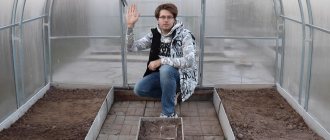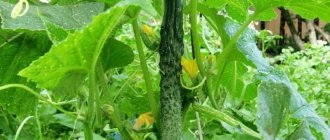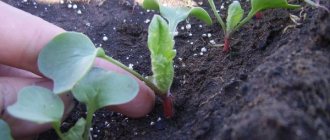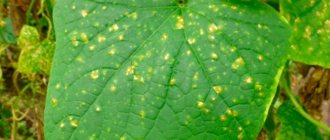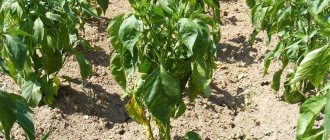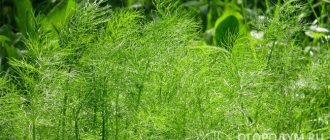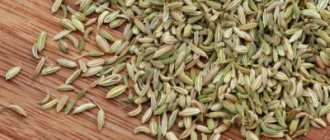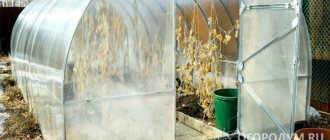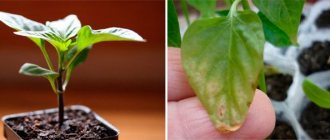An important component of high yields in greenhouse structures is the saturation of the soil with nutrients. Most often, organic substances are used in the form of fertilizing, but mineral fertilizers also have a positive effect on crops in the greenhouse.
To properly use certain fertilizers and fertilizers, you need to know their main features. You will find a detailed description of the main types of fertilizers and their use for feeding certain crops in this article.
- Phosphorus
- When and what to feed tomatoes
Fertilizing and fertilizing the soil in a greenhouse
The future harvest will depend on how you prepare the soil in the greenhouse. Organic fertilizers are the best for the soil. They enrich it with micronutrients, which makes them easy for plants to absorb. They affect the air, water and thermal properties of the soil and saturate it with carbon dioxide.
Organic is divided into humus, manure, bird droppings and peat (Figure 1). They are brought into the greenhouse as compost - with peat, plant residues and special nutrients.
Peat
Light high or dark lowland peat, as well as transitional peat, are used in the greenhouse. Due to its high acidity, pure peat is used only as a component of compost.
In the summer it is prepared like this: a half-meter layer of peat is poured, then manure and peat again. Cover and leave for a whole year. Add to the ground in the spring when digging the beds. This technology allows you to make the soil looser and saturate it with nutritional components.
Humus
It is obtained after complete decomposition of leaves, manure and plant roots. Due to the high nutrient content of the soil, microbiological processes intensify. This gives crops the opportunity to take the most necessary elements for a good harvest, so humus is used for growing seedlings.
Figure 1. Types of organic fertilizers for greenhouses
It is important to prepare the humus correctly. Fresh manure raises soil temperatures, and using fresh plants can encourage weed growth. Therefore, before use, the products must be put in a separate place and allowed to rot.
Compost
A good source of nutrients in the spring will be prefabricated compost: a mixture of peat, manure, fallen leaves, soil and wood ash with slaked soda. Mix all the ingredients, add water and mix again. We put them in piles and cover them on all sides with sawdust and peat. The procedure for preparing compost at home is shown in Figure 2.
Figure 2. The procedure for preparing compost with your own hands
Turf and deciduous soil is also used for the greenhouse. Fallen leaves are collected and placed in a wooden box, watered with water, mixed with superphosphate and wood ash and left to rot. This product is applied to the soil under vegetables. To get good turf soil, layers of turf are removed and stacked upside down, watering each layer with water and sprinkling it with wood ash and superphosphate.
Fertilizing the land with manure
This method of improving the quality of the land is considered the simplest. Manure contains all the nutrients necessary for a good harvest. In addition, in the process of adding manure to the soil, the structure and physical qualities of the soil become better.
In the fall, fresh manure is added to the digging so that it has time to decompose in the ground. Rotted manure, prepared in advance, can be added in the spring. Basically, fresh manure is used to create the effect of warm beds, and is also diluted with water to obtain a liquid consistency.
The author of the video will tell you the differences between organic and mineral fertilizers.
Thermal soil treatment
The soil in the greenhouse, the preparation of which is carried out in stages, is sometimes subjected to heat treatment. This method is called radical, and in the past it involved burning the remains of the stems left after harvesting. The fire destroyed pests, pathogenic bacteria and weed seeds, thereby sterilizing the earth.
In the process of thermal treatment of greenhouse soil, you need to water it with hot water, or arrange a steam bath for it. The soil is kept over a container of boiling water for at least half an hour.
Gardeners should remember the main disadvantage of heat treatment: not only pests are destroyed, but also beneficial microorganisms.
Today, steam engines have been invented to disinfect soil. After the soil has been treated with boiling water, it should be hermetically sealed for steaming.
If it is not possible to heat the soil in a steam engine, it is recommended to place it in bags and place it in the scorching sun for several weeks. Exposure to direct sunlight cleanses the greenhouse soil of harmful bacteria.
Mineral fertilizers
It is impossible to imagine fertilizing the soil in a greenhouse in the spring without mineral preparations. To get a good harvest, you need to combine organic products with mineral ones.
They are divided into simple (intended to saturate greenhouse plants with a certain element) and complex or mixed - for feeding several nutrients at once (Figure 3).
Phosphorus
Simple superphosphate is in greatest demand for greenhouses. It is brought into the ground for digging. To do this, superphosphate is diluted with water and left for three days, after which the upper part is drained for application to the soil.
This type of mineral fertilizer is inexpensive, but at the same time it is highly effective, saturating the soil with the necessary nutrients for the active growth of crops.
Potash
Among potash fertilizers, potassium sulfate is in demand. It is added in the fall after liming.
Wood ash with a large number of useful elements is considered a unique substance. It neutralizes soil acidity. It is applied in spring or autumn. Another valuable remedy is nitrophoska. It contains phosphorus, nitrogen and potassium. These drugs can be used either individually or in combination to ensure that the crops receive all the necessary substances.
Nitrogen
Ammonium nitrate is used for root feeding. But after this, the soil slightly acidifies, so such substances are not suitable for soils with high acidity.
Figure 3. Main types of mineral fertilizers
Urea or urea is used mainly for vegetable crops. The smallest amount of nitrogen is contained in sodium and potassium nitrate.
Wood ash
It is used for acidic or neutral soils (Figure 4). The ash contains: potassium, phosphorus, calcium, iron, magnesium, zinc, sulfur and other trace elements necessary for vegetables, as well as fruit and ornamental trees.
Figure 4. Using wood ash as a source of nutrients
The ash does not contain chlorine, so it can be used for strawberries, currants, raspberries, and potatoes.
Saltpeter
Ammonium nitrate is a mineral substance necessary for the production of so-called “building material” in plant cells. For better results, saltpeter is sometimes mixed with limestone or chalk.
Ammonium nitrate consists of small white granules; it is stored for a long time and is well stored.
The main parameters for using saltpeter include:
- in the spring as plant nutrition;
- as a mineral fertilizer for flowers;
- as additional support for plants during the growth period.
The advantage of ammonium nitrate is that it can be used on any type of soil.
Microfertilizers
Microfertilizers are just as important as basic ones. Each element releases its necessary portion of nutrients. After all, if the soil contains insufficient amounts of microelements, the plants will be weakened, begin to get sick, and the yield will decrease.
That is why, during the growing process, crops need to be carefully monitored, and if leaves turn yellow, growth slows, or fruiting decreases, separate microfertilizers must be used.
Feeding tomatoes in a polycarbonate greenhouse
In a greenhouse, nitrogen-containing fertilizers are used after the plants begin to grow and before flowering begins (Figure 5). After the first fruits appear, the plants are fed with nitrogen-containing substances. They are applied sparingly, as they can change the composition of the soil.
For normal root growth and fruit development in tomatoes, phosphorus preparations are also used.
For good formation and development of tomato fruits, potassium is added in large quantities. If the leaves of plants curl up, this is a signal of potassium deficiency.
Figure 5. Procedure for applying fertilizers for tomatoes in a greenhouse
If you have sandy loam or sandy soil, then for the formation of ovaries, growth and development of tomato fruits, you need to add magnesium sulfate. For greenhouse varieties of tomatoes, preference should be given to foliar feeding.
When and what to feed tomatoes
To apply fertilizers during the growth and development of tomatoes, use a standard scheme for increasing the nutritional value of the soil.
Nutrient application methods are divided into three groups:
- using only mineral products;
- using only organic matter;
- a combined method when organic and mineral products are used simultaneously.
The scheme for applying mineral fertilizers at different stages of tomato development is different.:
- The first feeding is carried out 20 days after transplanting the seedlings to a permanent place.
- After 10 days after the first feeding, the preparations are added again.
- 12 days after the second feeding, the third is carried out.
For feeding, take manure or slurry diluted with water. Leave for two days, then water the plants.
A small amount of solution is used for the first fertilizing after planting the seedlings. Tomatoes are regularly fed every 10-15 days. A prerequisite is to mulch the tomatoes after adding nutrients. Sawdust or peat are suitable for this.
Foliar feeding of tomatoes in a greenhouse
Foliar feeding of tomatoes in a greenhouse involves the use of a nutrient solution to spray the leaves and stems of plants. As a rule, it is carried out once a month, but, under certain conditions, it can be carried out more often.
For a better process of fruit setting and ripening, foliar application of nutrients in the form of superphosphate dissolved in water is used.
When tomatoes fall off their flowers due to the heat, apply foliar feeding with a solution of boric acid.
When to apply manure to potatoes. Fertilizing potatoes when planting
An effective and economical way to add nutrition to potatoes is to do this at planting, adding a certain amount of minerals and organic matter directly into the hole of each seed tuber.
For adherents of organic nutrition: add 1 tbsp to each well. l ash and 1 tbsp humus.
Humus is available to every gardener
Option for mineral supplements: add 1 tbsp. l nitrophoska. We recommend using Kemira complex fertilizer, one of the best in composition - it should be added 1 tbsp. l into the hole.
You can mix organics and minerals, this will be very advisable: 1 tbsp. humus, 1 tbsp. l ash and 1 tsp superphosphate.
For early-ripening varieties, nutrients in the hole are embedded at a depth of 10 cm. For mid-ripening varieties, the proportions must be increased by at least one and a half times and embedded a little deeper by 15 cm. Experienced gardeners recommend adding dry onion peels (from pests) and crushed shells (anti-acidification) .
Fertilizers should be applied to the bottom of the hole and slightly deeper. If you sprinkle bait close to the top ridge, you may find many green tubers close to the surface when harvesting. This is due to the fact that the roots stretch to where there is more food. If you added additional nutrition to the soil surface during planting, and the soil was not loose and moist enough, then the roots will stretch upward, and the first tubers will be close to the roots.
Feeding cucumbers in a polycarbonate greenhouse
Cucumbers are very demanding on soil fertility, so when grown in a greenhouse, nutrients are added regularly, in fractional portions (Figure 6).
Features of fertilizing greenhouse cucumbers are::
- A few days before planting, the seedlings are sprayed with a solution of microelements and fed. To grow cucumbers in a greenhouse, you can use soil consisting of manure and turf soil.
- In new greenhouses, layer-by-layer application of organic matter and soil mixtures is recommended. Compost or manure is added to the underlying layer, then dug up. Fresh horse manure on sawdust is added on top of it. Such a pillow will serve as drainage for the root system. Composted soil is laid on this layer and useful substances are added in the form of potassium, phosphorus, nitrogen and magnesium preparations.
- In winter, in greenhouses in low light conditions, nitrogen must be added in nitrate form.
The soil that is reused is mixed with manure and loosening materials before planting cucumbers, and then dug up.
Figure 6. Fertilizer application for greenhouse cucumbers
When the root system of cucumbers develops poorly, root fertilizers are used in combination with foliar fertilizers. Foliar ones are more suitable for sick plants, namely those affected by root-knot nematodes. But foliar ones will not replace good nutrition through the root system. Regardless of the type, it is better to apply nutrients in cloudy weather or just before sunset.
From the video you will learn more useful information about feeding cucumbers in a greenhouse.
Feeding peppers in a polycarbonate greenhouse
In polycarbonate greenhouses, the microclimate is more stable than in film shelters. However, this does not mean that peppers do not require additional nutrients.
Basic requirements for fertilizing peppers in a greenhouse include (Figure 7):
- Peppers are fed with a solution of organic and mineral substances diluted with warm, settled water every two weeks.
- Before adding nutrients, the plants are watered with warm water, and then fertilizing is applied.
- After each such procedure, loosening is carried out.
- Fertilizing with organic and mineral means alternates.
- All fertilizing is carried out on moist soil.
Figure 7. The procedure for feeding peppers in a greenhouse
It is necessary to monitor the amount of nitrogen fertilizers, because excess feeding will lead to too active growth of green mass and slower fruiting. If the soil has been saturated with organic matter since the fall, mineral fertilizing in the spring can be carried out in smaller quantities.
Fitosporin for soil disinfection
This universal biological fungicide was already mentioned earlier in the article.
There are several areas of its application:
- protection against plant diseases of a fungal, viral or bacterial nature;
- accelerating the growth and development of seedlings, increasing resistance to temperature changes;
- bioprotection, ensuring crop storage for a long period of time.
To disinfect the soil, it is necessary to dilute 5 g of Fitosporin powder or 2 ml of the drug per 1 liter of water, if it is in the form of a suspension. It is recommended to carry out soil disinfection work when its temperature reaches at least 13-15 degrees.
The diluted solution of Fitosporin should be sprayed using a garden sprayer over the entire area of the greenhouse. To keep it in the ground and not flow down, you can add a few drops of dishwashing detergent.
Feeding greenery in a greenhouse
In a heated greenhouse, greens can be grown year-round. But even if the structure is not heated, you can get fresh dill, parsley, lettuce and green onions much earlier than in the garden. To do this, you will need to properly fertilize the soil in the greenhouse (Figure 8).
Figure 8. The green bed is fed with nitrogen fertilizers even before sowing the seeds.
Fertilizing greenery in a greenhouse should be treated with great care. It is important not to overdo it with fertilizers, otherwise the finished greens will contain an increased amount of nitrates.
Since most green crops are characterized by rapid growth and expansion of green mass, it is enough to fertilize them only once - at the stage of preparing the bed for sowing. Fertile soil is dug up and any nitrogen fertilizer is added to it. Most summer residents prefer nitroammophoska in granules. Next, sowing is carried out and the bed is watered. This amount of nutrients is enough for the plants to start growing quickly, but the greens do not contain harmful substances.
